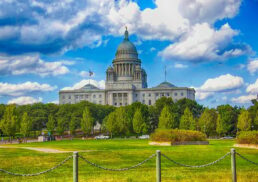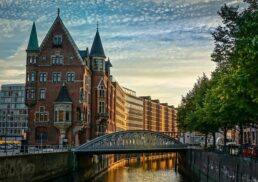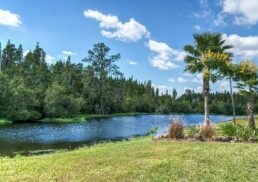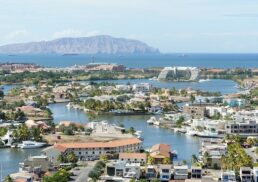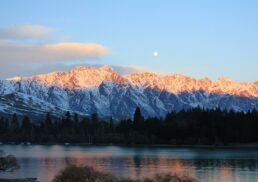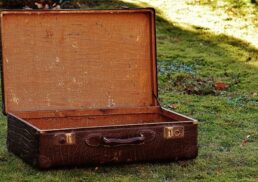Curious about the northern territories, Canada? This article explores their vast landscapes, rich Indigenous cultures, and important economic and environmental roles. Discover the geography, cultures, history, economy, government, living conditions, education, healthcare, major cities, climate, transportation, tourism, land claims, and wildlife conservation efforts in this unique region.
Table of Contents
Key Takeaways
The Northwest Territories features a diverse geography, encompassing the Arctic Archipelago, arctic mainland, and Mackenzie Valley, each with unique ecological and geological characteristics.
Indigenous communities in the region maintain a deep connection to the land, using traditional knowledge for sustainable resource management and cultural heritage preservation.
Tourism and natural resource extraction, including diamond and oil production, are essential to the economy, with ongoing investments aimed at improving infrastructure and accessibility.
Geography of Northern Territories
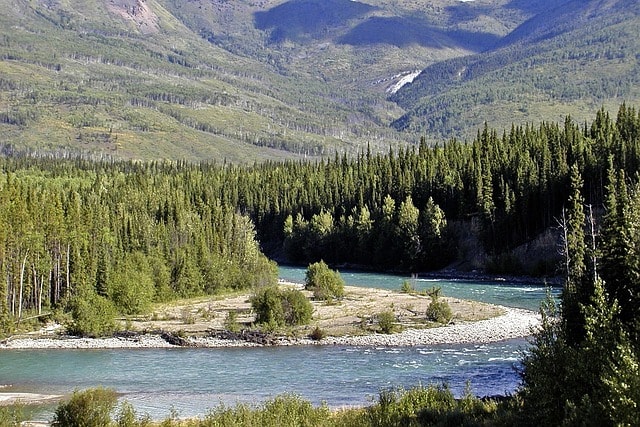
The Northwest Territories, a vast area extending northwards to the Arctic Circle, is composed of three main geographic areas: the Arctic Archipelago, the arctic mainland, and the Mackenzie Valley. The Arctic Archipelago itself consists of 94 major islands, including Banks Island and parts of Victoria Island, forming a rugged landscape that is as challenging as it is beautiful.
The eastern Arctic, which became part of Nunavut in 1999, also plays a significant role in the geographical landscape of Northern Canada.
The arctic mainland is dominated by the Canadian Shield, a massive expanse of ancient rocks shaped by millennia of glacial activity. This landscape is characterized by its dramatic terrain, where rocky outcrops and vast tundra plains meet. The Mackenzie Valley, on the other hand, offers a geologically diverse environment, transitioning from the Canadian Shield to younger sedimentary formations, presenting a unique ecological and geological mosaic.
Permafrost is a significant feature of the northern environment, influencing drainage and vegetation patterns across the region. This frozen ground presents unique challenges for construction and impacts the types of vegetation that can thrive here. The arctic mainland, for instance, is predominantly covered by tundra, with stunted trees appearing only in more sheltered areas.
As you travel through these regions, you will witness how the land itself tells the story of the northwest territories covered and the north western territory. From the icy waters of the Arctic Ocean to the fertile plains of the Mackenzie Valley in the southern part, this geography has shaped the lives and cultures of the people who call it home.
Indigenous Communities and Cultural Heritage
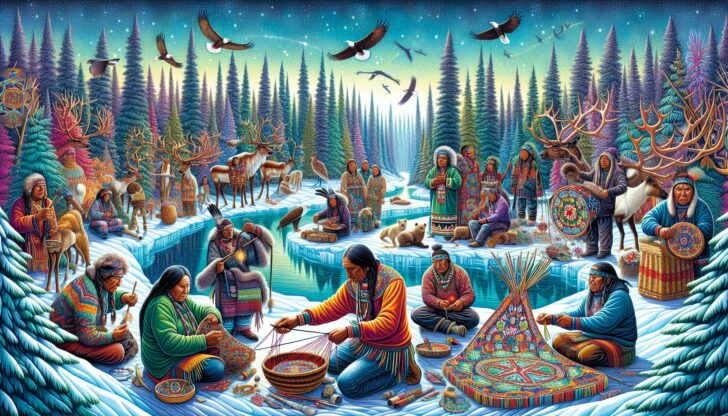
Indigenous communities in the Northwest Territories share a deep connection to the land, rooted in millennia of cultural traditions and practices. First Nations and Inuvialuit communities have long depended on hunting, fishing, and gathering for their livelihood. Generational knowledge of the land and its resources remains unparalleled among these communities.
The rich cultural heritage is celebrated and meticulously preserved. Indigenous Peoples Day serves as a significant event to honor and explore the region’s diverse cultures. Events like Folk on the Rocks in Yellowknife attract music enthusiasts and showcase the artistic traditions of Indigenous communities.
Indigenous knowledge plays a vital role in conservation efforts in the Northwest Territories. Initiatives like SEAS provide Lutsel K’e youth with skills in wildlife monitoring and maintaining cultural sites. Combining traditional knowledge with modern techniques ensures sustainable management of the region’s resources and heritage.
Indigenous-guided tours offer visitors hands-on experiences with traditional practices and local culture. From participating in hunting expeditions to exploring local art, there are numerous ways to connect with the living history of this land.
History and Exploration
A rich history of exploration and adventure defines the Northwest Territories. The Vikings were among the earliest European explorers to reach this northern frontier around 1000 CE. Their arrival initiated a long history of European interest, driven by the lure of the Northwest Passage and new trade routes, including those extending to British Columbia.
Martin Frobisher’s 1576 expeditions in search of the Northwest Passage paved the way for future explorations. Samuel Hearne’s early 1770s journey to the Coppermine River marked another milestone, adding valuable knowledge of the territory’s geography and resources.
The Canadian government acquired the Northwest Territories in 1870, significantly influencing the region’s governance and Indigenous lifestyles.
Alexander Mackenzie’s 1789 navigation of the Mackenzie River to its mouth was particularly impactful. His journey established vital fur trade routes and opened the region to further economic development. Mackenzie’s exploration laid the foundation for the fur trade, a cornerstone of the region’s economy for decades, including the influence of Hudson’s Bay Company.
The Hudson’s Bay Company played a pivotal role in the fur trade, establishing a monopoly that shaped the early economic landscape of the Northwest Territories.
The North West Company was another dominant fur trading enterprise in the 1700s, competing with the Hudson’s Bay Company and influencing the region’s development.
Economy and Natural Resources
Natural resources play a crucial role in the economy of the Northwest Territories. Mining, especially diamond extraction, is pivotal, complemented by gold and uranium deposits. Yellowknife, the territorial capital, stands out as a key economic hub with one of Canada’s fastest-growing economies.
Oil and gas exploration is on the rise. This trend is notable in the Mackenzie River valley and the Beaufort Sea. These industries offer substantial employment and significantly contribute to the region’s GDP. The Northwest Territories attracts skilled workers with unique compensation packages, often including bonuses and incentives.
Substantial federal investments are modernizing transportation infrastructure to support local economies. Programs such as the Canada Community-Building Fund and the Investing in Canada Infrastructure Program aim to improve connectivity, public transit systems, and road networks. Such initiatives are vital for sustaining economic growth and ensuring that all communities benefit from resource extraction. The federal government has been instrumental in funding infrastructure projects, ensuring the economic growth and connectivity of the Northwest Territories.
Government Structure and Politics
The Northwest Territories uses a unique consensus government model, electing all Members of the Legislative Assembly as independents. This system fosters cooperation, as decisions are made by a simple majority vote instead of requiring unanimous agreement. The Canadian government plays a significant role in the overarching governance of the Northwest Territories, working alongside the local consensus government.
Post-elections, a Territorial Leadership Committee meeting is held to elect the Speaker, Premier, and Cabinet Ministers. Electing the Premier involves public presentations and secret ballot voting, possibly requiring multiple rounds for sufficient support. Cabinet Ministers are similarly elected by secret ballot from among the Legislative Assembly members. The federal government delegates certain responsibilities to local authorities, ensuring a balanced approach to governance.
Accountability is integral to this political system, allowing for the removal of the Premier or Cabinet Ministers via motions of non-confidence if needed. This structure ensures government responsiveness to constituent needs, promoting transparency and integrity.
Living Conditions and Cost of Living
Life in the Northwest Territories presents unique challenges and rewards. Housing prices are notably impacted by the need for weather-resistant buildings. House prices average between $275,000 and $310,000, with costs outside Yellowknife about 50% lower.
Family incomes in the Northwest Territories average around $105,000, which is relatively high. However, daily necessities cost more due to transportation challenges, with many goods shipped from southern Canada. Despite higher costs, many residents engage in traditional activities like fur harvesting to supplement their income.
Traditional practices offer economic benefits, strengthen community bonds, and preserve cultural heritage. Life in the Northwest Territories combines modern conveniences with traditional lifestyles, all set against a stunning natural backdrop.
Education and Healthcare Services
The Northwest Territories offers accessible and comprehensive education. Citizens or permanent residents under 20 have the right to free education up to high school. Education is provided up to the high school level. Aurora College is the major post-secondary institution, offering diverse programs and courses for the local population.
Apart from the public education system, various apprenticeship and training programs are available. A bursary program for students in health and social services offers financial support ranging from $2,500 to $10,000 annually. Such initiatives guarantee residents access to quality education and essential skills for community contribution.
Major Cities and Communities
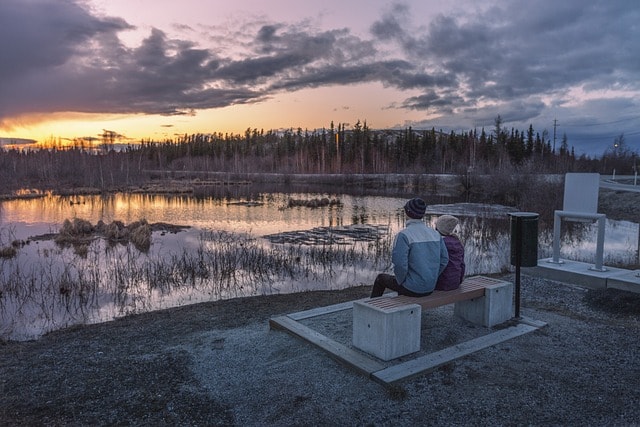
Yellowknife, the largest city and territorial capital, is the economic and political hub of the Northwest Territories. Home to about 20,000 people, Yellowknife boasts a mixed, multicultural community. The government and diamond industry are major employers, contributing to Yellowknife’s low unemployment rate.
Inuvik, known for its unique Arctic climate, serves as a travel gateway to the Arctic. Lutselk’e, near the pristine East Arm of Great Slave Lake, is famed for its natural beauty and cultural significance.
Small settlements like Enterprise serve as tourism service hubs, offering essential amenities and visitor support. Each community in the Northwest Territories brings unique charm and contributions to the region’s rich tapestry of life.
Climate and Environment
The Northwest Territories experience extreme temperature variations, with summer highs of 30°C and winter temperatures plunging well below freezing. This subarctic climate results in long, cold winters and short, warm summers.
Climate change noticeably impacts the region, causing increased temperatures and altered precipitation patterns. These changes impact the permafrost, a key landscape feature playing a crucial role in ecological processes.
The northern environment of the Northwest Territories is beautiful yet fragile, requiring careful management to preserve its unique characteristics in northern Canada. The interplay of natural resources, climate, and human activity continues to shape the future of this remarkable region.
Transportation and Accessibility
Transportation is critical in the Northwest Territories due to vast distances and limited road connectivity. Air travel is vital for connecting communities and accessing goods and services.
Infrastructure projects like flood hazard mitigation aim to protect transportation routes from natural disasters and enhance accessibility. Such initiatives are vital for maintaining residents’ quality of life and keeping the region accessible to visitors and businesses.
Tourism and Attractions
Tourism in the Northwest Territories offers diverse experiences, from exploring vast national parks to participating in cultural festivals. Straddling Alberta, Wood Buffalo National Park is Canada’s largest national park and a sanctuary for native bison. Fort Smith, located near the edge of this park, is significant for nature tourism, offering visitors a chance to witness stunning wildlife and serene landscapes.
Yellowknife is home to the Folk on the Rocks music festival, a vibrant event that showcases local talent and attracts visitors from across the region. For those looking to engage with the natural beauty of the Northwest Territories, the Frame Lake Trail offers a scenic hiking destination with diverse wildlife. Adventure seekers can join Canoe North Adventures for rafting tours that provide breathtaking views and opportunities to witness the Northern Lights.
Other notable attractions include Yellowknife’s legislature building, known for its unique architecture and guided tours. These diverse activities highlight the region’s rich cultural heritage and natural beauty, making it a must-visit destination for travelers seeking an unforgettable experience.
Land Claims and Indigenous Rights
The negotiation of Indigenous rights agreements in the Northwest Territories began in 1975 and has evolved through various stages, including:
exploratory discussions
framework agreements
agreement-in-principle
final agreements
The establishment of Nunavut as a separate territory in 1999 marked a significant administrative and geographical change in Canada.
These agreements progressively detail the terms related to land claims and self-governance, laying the groundwork for equitable resource management and political representation.
There are four main types of agreements: Land and Resources agreements outline Aboriginal rights related to land and resources, while Self-government agreements establish the inherent right of Aboriginal parties to govern themselves. Combined agreements integrate aspects of both land claims and self-governance, clarifying Aboriginal rights and defining government jurisdictions. Additionally, transboundary agreements focus on harvesting rights and are formed between the Government of Northwest Territories and Aboriginal groups from other regions.
Final agreements create legally binding treaties and include implementation plans that outline how the agreements will be executed. These negotiations and agreements are crucial for recognizing and protecting the rights of Indigenous peoples, ensuring their voices are heard in the management of their ancestral lands.
Wildlife and Nature Conservation
The Northwest Territories is home to a diverse array of wildlife, including iconic species such as polar bears and numerous migratory birds. Efforts to conserve this rich biodiversity are highlighted by the creation of Thaidene Nene, one of Canada’s largest protected areas, spanning 6.5 million acres. This area is crucial for various wildlife species and serves as a testament to the region’s commitment to preserving its natural heritage.
National parks in the Northwest Territories play a significant role in these conservation efforts, offering protected habitats for wildlife and opportunities for scientific research. These parks also provide a space for traditional Indigenous practices, blending conservation with cultural preservation.
The interplay between conservation and traditional knowledge is evident in the region’s approach to managing its natural resources. By integrating modern practices with Indigenous wisdom, the Northwest Territories ensures that its unique northern environment remains a sanctuary for wildlife and a source of cultural pride for its people.
Checkout The top 10 attractions in the Northwest Territories
Summary
The Northwest Territories of Canada is a land of breathtaking beauty, rich cultural heritage, and remarkable natural resources. From the rugged landscapes of the Arctic Archipelago to the vibrant communities of Yellowknife and Inuvik, this region offers a unique blend of history, culture, and economic opportunity. The Indigenous peoples’ deep connection to the land, combined with modern conservation efforts, ensures that the natural environment is preserved for future generations.
As you reflect on the geography, cultural heritage, history, economy, and living conditions of the Northwest Territories, it becomes clear that this region is not just a place to visit but a place to experience. The intricate dance between traditional lifestyles and contemporary developments creates a dynamic and resilient community. Whether you are drawn to the stunning natural landscapes, the rich cultural traditions, or the vibrant economic opportunities, the Northwest Territories promises a journey of discovery and inspiration.
Frequently Asked Questions
What are the main geographic areas of the Northwest Territories?
The main geographic areas of the Northwest Territories include the Arctic Archipelago, the arctic mainland, and the Mackenzie Valley, each characterized by unique geological and ecological features.
How do Indigenous communities preserve their cultural heritage?
Indigenous communities preserve their cultural heritage through traditional practices like hunting and fishing, as well as celebrating significant cultural events and integrating traditional knowledge in conservation efforts. This multifaceted approach ensures the continuation and vitality of their cultural identity.
What is the primary economic driver in the Northwest Territories?
The primary economic driver in the Northwest Territories is mining, especially diamond mining, alongside considerable contributions from oil and gas exploration.
How does the government structure of the Northwest Territories work?
The government structure of the Northwest Territories operates on a consensus model, with all Members of the Legislative Assembly elected as independents and decisions reached through a simple majority vote. This approach fosters cooperation and inclusivity in governance.
What are some major tourist attractions in the Northwest Territories?
In the Northwest Territories, prominent tourist attractions include Wood Buffalo National Park, the Folk on the Rocks music festival, the Frame Lake Trail, and the legislature building in Yellowknife. These sites offer unique experiences that highlight the natural beauty and cultural vibrancy of the region.
